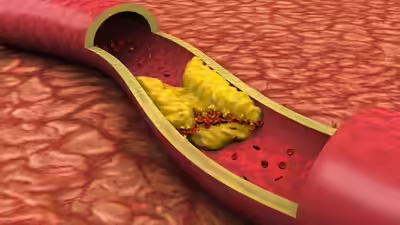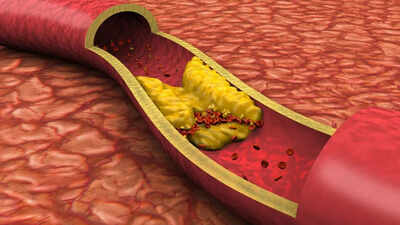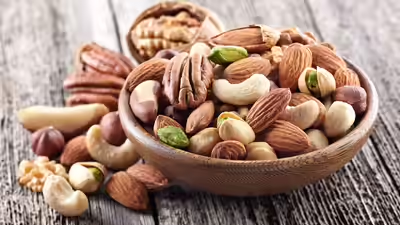LDL vs. HDL cholesterol: Understanding the key differences, heart disease risk, and natural ways to balance levels |

Cholesterol often gets a bad reputation, but it plays a crucial role in the body. It helps build healthy cells, produces essential hormones like estrogen and testosterone, and aids digestion through bile production. The focus should not be on eliminating cholesterol entirely but on maintaining a healthy balance between its two main types: LDL (low-density lipoprotein) and HDL (high-density lipoprotein). LDL, known as “bad cholesterol,” can accumulate in arteries and increase heart risk, while HDL, the “good cholesterol,” helps remove excess cholesterol from the bloodstream. Understanding these differences and managing them through diet, lifestyle, and exercise is essential for maintaining optimal heart health and preventing cardiovascular diseases.
Understanding cholesterol and why does it matter
Cholesterol is a fatty substance present in your blood. While your body produces it naturally, you also obtain it from certain foods. Cholesterol travels through your bloodstream in packages called lipoproteins, which are categorised as LDL or HDL. Each type has a distinct role in your body.Research published in BMC Medicine suggests a U-shaped relationship between HDL cholesterol levels and the risk of major adverse cardiovascular events (MACE). The study found that both low and high levels of HDL cholesterol were associated with increased cardiovascular risk compared to moderate levels. This indicates that merely increasing HDL cholesterol levels may not necessarily reduce heart disease risk and that optimal levels may vary among individuals.
LDL (Low-Density Lipoprotein) also considered as bad cholesterol
LDL cholesterol is often termed “bad” because excessive amounts can accumulate in your arteries. When LDL cholesterol builds up on the inner walls of your blood vessels, it forms a sticky substance called plaque. Over time, this plaque narrows the arteries, limiting blood flow and increasing the risk of cardiovascular diseases, including heart attacks and strokes. High LDL is strongly associated with atherosclerosis, a condition that can silently damage your heart over the years.
HDL (High-Density Lipoprotein) also considered as good cholesterol
HDL cholesterol acts as a protective factor for your cardiovascular system. It functions as a scavenger, collecting excess cholesterol from the bloodstream and transporting it to the liver for breakdown and removal. Higher levels of HDL are linked to lower risks of heart disease, making it the “good” cholesterol that every individual should aim to increase through diet, exercise, and lifestyle habits.Balancing LDL and HDL is critical. Even if your total cholesterol appears normal, an imbalance of high LDL and low HDL can still pose significant health risks.
Dangers of high LDL and low HDL
High LDL cholesterol and low HDL levels are silent threats because they rarely cause symptoms until serious damage occurs. The consequences of prolonged imbalance include:
- Atherosclerosis: Hardening and narrowing of arteries due to plaque buildup.
- Heart Disease: Increased risk of angina, heart attacks, and other coronary conditions.
- Stroke: Plaque can rupture or dislodge, causing blockages in the brain’s blood vessels.
- Peripheral Artery Disease: Poor circulation to limbs due to arterial blockage.
Regular health check-ups and blood tests are essential for monitoring cholesterol levels. Early intervention through lifestyle changes can significantly reduce these risks.
5 simple lifestyle changes to lower bad cholesterol naturally
- Start your day with fibre-rich breakfasts
Fibre, especially soluble fibre, is a powerful ally in lowering LDL cholesterol. It binds to cholesterol in the digestive system, preventing it from being absorbed into the bloodstream and facilitating its excretion.High-fibre breakfast ideas:
- Oatmeal: Top with berries, nuts, or seeds for added nutrients and heart-healthy fats.
- Smoothies: Blend chia seeds or flaxseeds with fruits like apples or bananas for a fibre boost.
- Whole-Grain Options: Swap white bread for multigrain or whole wheat toast, which are rich in soluble fibre.
Consuming fibre early in the day not only helps manage cholesterol but also stabilises blood sugar levels and promotes satiety, reducing unhealthy snacking.
- Opt for heart-healthy fats in your cooking
Not all fats are harmful. While saturated and trans fats can raise LDL cholesterol, unsaturated fats found in olive oil, sunflower oil, nuts, seeds, and avocado that can help increase HDL levels and support overall cardiovascular health.Tips for healthy fat consumption:
- Replace butter and ghee with olive or mustard oil for cooking.
- Prefer steaming, grilling, or air-frying instead of deep-frying foods.
- Use avocado or nut-based spreads instead of mayonnaise or butter.
- Even small dietary swaps can lead to measurable improvements in cholesterol profiles over time.
- Snack smart with nuts and seeds
Nuts and seeds are rich in plant sterols and omega-3 fatty acids, both of which are scientifically proven to reduce LDL cholesterol naturally. These tiny nutritional powerhouses can also improve HDL levels and support heart health.How to incorporate nuts and seeds:
- Enjoy a small handful of almonds, walnuts, or pistachios daily.
- Add pumpkin seeds or sunflower seeds to salads or morning cereals.
- Pair nuts with fruits for a satisfying snack that maintains blood sugar levels.
- Portion control is important, as nuts are calorie-dense. Overconsumption could lead to weight gain, which in itself is a risk factor for high cholesterol.
- Include plenty of fruits and vegetables in every meal
Fruits and vegetables are low in calories, high in nutrients, and rich in soluble fibre, which can reduce LDL cholesterol levels. They also contain antioxidants that protect your heart from oxidative stress and inflammation.Effective choices for cholesterol management:
- Fruits: Apples, oranges, grapes, and berries for their pectin content.
- Vegetables: Spinach, carrots, okra, and broccoli, all of which support cardiovascular health.
Key tips:
- Fill half your plate with vegetables at every meal.
- Include a piece of fruit with breakfast, lunch, or dessert.
- Blend vegetables into soups or smoothies if raw intake is low.
A diet rich in colourful produce not only lowers bad cholesterol but also boosts overall immunity and vitality.
- Incorporate regular physical activity, even at home
Exercise is one of the most effective ways to manage cholesterol naturally. Physical activity helps raise HDL cholesterol while lowering LDL, promoting better circulation and overall heart health.Ways to stay active without a gym:
- Take brisk walks around your home or neighbourhood for 20–30 minutes daily.
- Engage in simple home workouts such as yoga, skipping, or stair climbing.
- Perform household chores like gardening, sweeping, or mopping—these all count as physical activity.
- Consistency is key. Even moderate daily movement can significantly improve cholesterol levels over time.
Additional lifestyle habits to support healthy cholesterol
Beyond diet and exercise, other habits can influence cholesterol levels:
- Quit smoking: Smoking lowers HDL cholesterol and damages blood vessels.
- Limit alcohol intake: Excess alcohol can raise triglycerides and affect liver function.
- Manage stress: Chronic stress can negatively affect heart health and cholesterol.
- Maintain healthy weight: Excess weight increases LDL and decreases HDL levels.
Incorporating these habits alongside a nutritious diet and regular exercise creates a holistic approach to cardiovascular well-being.Also Read | This simple push-up test could uncover hidden heart risks: AIIMS-trained doctor explains how completing 40 push-ups might slash heart attack chances




